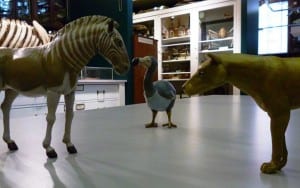Happy 129th Quagga Day – A new specimen?
By Jack Ashby, on 12 August 2012
129 years ago today, 12th August 1883, the last quagga died. 
Since I was employed at the Grant Museum I have been looking for ways to celebrate what we call “Quagga Day”. Last year on the blog I described the lack of publicity that quaggas get and I heartily recommend you read what I said.
Also read it if you want to know more about what quaggas were, beyond the fact that they were a not-very-stripy-zebra. We never tire of telling people that we have the rarest skeleton in the world in the Grant Museum – and it is our quagga – but regular readers would probably tire of us explaining what they were and what we think about them.
This year we can celebrate in almost two ways:
1) Our quagga skeleton now has it’s very own website where you can learn all about it.
Almost 2) I thought I had discoverd a new specimen of quagga (which would rock the zoological world to its very core), but later discovered I hadn’t. Here’s what happened…
 Close
Close



